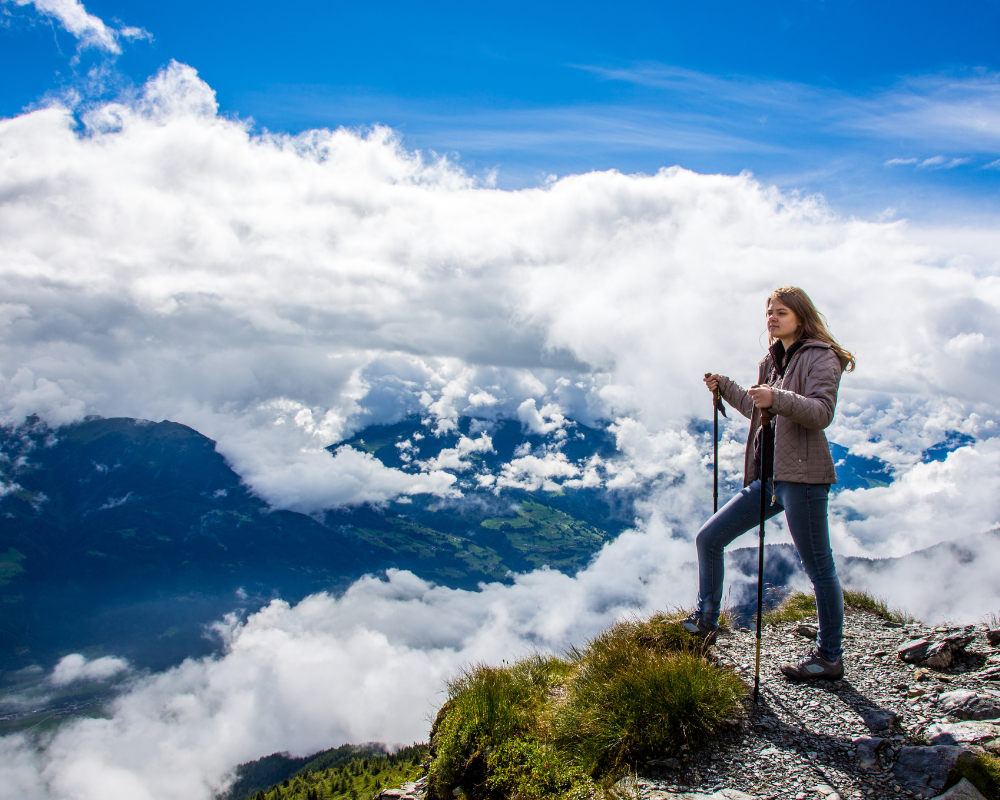The world of high-altitude mountaineering is both exhilarating and demanding. Among the majestic peaks of the Indian Himalayas, Black Peak, also known as Kalanag, stands tall at approximately 6,387 meters (20,955 feet) in the Garhwal region of Uttarakhand. The Black Peak Expedition offers not just a climb but a transformative adventure—one that challenges the body, tests mental endurance, and rewards climbers with breathtaking views and deep personal satisfaction.
However, for first-time climbers, the excitement must be tempered with caution. High-altitude climbing requires thorough preparation, proper acclimatization, technical skills, and the right timing. Attempting a climb like Black Peak without the right foundation can be risky and, in some cases, even life-threatening. So when is the right time for first-timers to embark on this thrilling expedition? Let’s explore the ideal season, physical and technical requirements, preparatory steps, and safety measures that ensure a successful and safe ascent.
Understanding Black Peak: A Brief Overview
Located in the Bandarpunch massif of the Western Garhwal Himalayas, Black Peak is named for its dark, striking appearance. It stands next to its siblings—Bandarpunch I and Bandarpunch II (also known as White Peak). Though not as popular as some of the commercial peaks like Stok Kangri or Island Peak, Black Peak is a serious climb. It involves glacier travel, crevasse navigation, and sections that demand ice axe, crampon, and rope usage.
The route typically begins from the quaint village of Sankri, and the expedition follows through scenic forests, alpine meadows, and glaciated terrain before reaching the summit. With its mix of technical challenges and raw Himalayan beauty, Black Peak offers an ideal stepping stone for those transitioning from trekking to mountaineering.
Why the Timing Matters
Timing is everything when it comes to mountaineering, and it’s especially crucial for first-time climbers. The best window to attempt the Black Peak Expedition is between May to June and September to mid-October. These months provide the most stable weather, less snow accumulation, and clearer skies, minimizing the risk of avalanches and whiteouts.
Avoiding the monsoon season (July and August) is essential. During this time, the region experiences heavy rainfall, which increases the danger of landslides, flash floods, and slippery trails. Winter months are reserved for highly experienced climbers due to extreme cold, heavy snow, and increased technical difficulty.
For first-timers, the pre-monsoon (spring) and post-monsoon (autumn) windows offer the best balance between accessibility and safety. The days are relatively warm, nights are manageable, and the terrain remains stable enough for acclimatization and safe climbing practices.
Are You Ready for Black Peak?
Before considering the Black Peak climb, first-timers must evaluate their physical fitness, mental resilience, and mountaineering knowledge. While you don’t need to be a professional athlete, you must possess a high level of endurance, cardiovascular fitness, and muscular strength. Training should begin at least 4 to 6 months in advance and include a mix of aerobic exercises (running, swimming, cycling), strength training (especially legs and core), and altitude preparation (stair climbing with a backpack, hikes at elevation if possible).
In addition to physical training, aspiring climbers must familiarize themselves with the basic mountaineering equipment—ice axe, crampons, carabiners, harnesses, and ropes. Knowing how to use these tools under guidance before heading to the actual climb can make a crucial difference.
Enrolling in a basic mountaineering course from reputed institutes like the Nehru Institute of Mountaineering (NIM) or Himalayan Mountaineering Institute (HMI) is highly recommended. These programs equip climbers with the technical know-how and confidence required for expeditions like Black Peak.
Acclimatization: The Golden Rule
One of the most overlooked yet vital components of high-altitude trekking and climbing is acclimatization. The human body needs time to adjust to the decreasing oxygen levels as altitude increases. First-time climbers often underestimate this process and push too hard too fast, leading to altitude sickness or even acute mountain sickness (AMS).
A safe Black Peak expedition plan should include multiple acclimatization days, especially after crossing the 3,000-meter and 4,500-meter thresholds. This gradual ascent allows your body to adapt, reducing the risk of AMS and other altitude-related complications.
Hydration, rest, light activity during acclimatization days, and avoiding alcohol or sedatives are essential practices. Guided expeditions led by certified mountaineers always factor in acclimatization schedules, and for first-time climbers, it’s non-negotiable.
Choosing the Right Guide and Team
For those attempting Black Peak for the first time, going solo is not an option. Partnering with a certified mountaineering company or experienced expedition leader is the safest route. Reputed adventure agencies offer guided packages that include trained guides, porters, equipment, food, and emergency protocols.
Look for agencies that have a solid track record with Black Peak, preferably those with mountaineers who hold certifications from UIAA, IMF, or other globally recognized institutions. A good guide does more than lead the way—they monitor your health, manage risks, handle emergencies, and make crucial decisions during unpredictable weather or technical sections.
A supportive team is equally vital. Climbing with individuals who are physically and mentally prepared enhances morale and safety. It creates a shared sense of responsibility, especially during difficult sections like glacier crossings or steep ascents.
Essential Gear for First-Time Climbers
Proper gear can make or break your expedition. Even the most determined climber can be forced to turn back due to cold injuries, poor visibility, or equipment failure. For the Black Peak Expedition, the following gear list is recommended:
- Clothing: Base layers, thermal insulation layers, waterproof and windproof jackets, down jackets, gloves (inner and outer), balaclava, neck gaiter, woolen socks, and gaiters.
- Footwear: High-quality mountaineering boots compatible with crampons, and insulated for snow conditions.
- Technical Equipment: Ice axe, crampons, climbing harness, helmet, ropes (provided by guides), carabiners, ascenders, and descenders.
- Camping Equipment: Sleeping bag rated for sub-zero temperatures, headlamp with extra batteries, trekking poles, hydration bladder or water bottles, and high-energy snacks.
- Health and Safety: Sunscreen (SPF 50+), lip balm, sunglasses (category 4), blister kit, personal medications, and a basic first aid kit.
Many of these items can be rented through agencies, but personal comfort gear should be bought and tested before the climb.
Weather: The Unseen Challenge
Mountain weather is unpredictable. Bright sunny mornings can turn into snowstorms by afternoon. This is especially true for peaks like Black Peak where the high-altitude microclimate can change within hours. For first-time climbers, understanding weather patterns, reading forecasts, and being mentally prepared for delays or route changes is crucial.
Always have a buffer day or two in your itinerary to accommodate weather delays. Avoid summit fever—the urge to reach the top at any cost—and always respect the mountain’s mood. A safe retreat is not a failure; it’s a mark of wisdom.
The Psychological Battle
High-altitude climbing is as much a mental game as a physical one. For many first-timers, this is the first time they’re confronting harsh elements, isolation, fear of failure, and physical exhaustion simultaneously. Fatigue, doubt, and anxiety can creep in, especially during the summit push when conditions are most demanding.
Mental preparation through meditation, visualization, and resilience training can help. Surrounding yourself with a supportive team, having clear goals, and developing a flexible mindset prepares you to adapt to challenges instead of resisting them.
Celebrating small wins—like reaching base camp or completing a glacier crossing—helps keep morale high. Remember, the summit is just one part of the journey; getting back safely is the true success.
Why Black Peak is Ideal for Aspiring Mountaineers
Despite its challenges, the Black Peak Expedition is a perfect intermediate-level mountaineering goal for first-timers looking to graduate from trekking. Unlike Everest Base Camp or Annapurna Circuit, which are demanding treks but non-technical, Black Peak offers a taste of real alpine climbing—complete with rope work, crampons, and glacier travel—without the extreme altitude of 7,000-meter-plus peaks.
It bridges the gap between trekking and technical expeditions, giving climbers a taste of Himalayan adventure while allowing them to test their limits in a controlled, guided environment. It prepares you for future peaks and builds confidence in high-altitude environments.
Post-Expedition: Recovery and Reflection
The journey doesn’t end with the descent. After the expedition, your body needs recovery—physically, mentally, and emotionally. Hydration, rest, and nutrition are crucial. Gentle activities like stretching, yoga, and walking help restore normalcy to tired muscles.
Reflecting on your experience helps cement the lessons learned. What did you enjoy most? What would you do differently next time? Would you want to attempt another peak? Sharing your experience with others, writing a journal, or even creating a photo story allows you to relive the journey and inspire others to follow in your footsteps.
Conclusion
So, when should first-time climbers attempt the Black Peak Expedition safely? The answer lies in the harmony of timing, preparation, and self-awareness. Choose the right season—spring or autumn—when the weather is stable. Build your physical fitness and technical skills months in advance. Go with an experienced team, respect acclimatization protocols, and be mentally prepared for both challenges and changes.
The Black Peak Expedition is not just a climb—it is a rite of passage. It invites you to push beyond your comfort zone, stand on the edge of the sky, and emerge transformed. With the right approach, it becomes not just a summit but a story of personal triumph and discovery.



